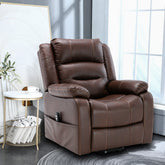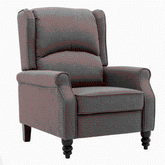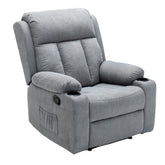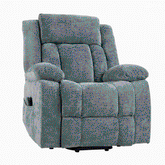Illuminate Your Workspace: LED Lighting for Enhanced Office Efficiency in South Africa
The Role of Ergonomics in Enhancing Office Productivity
Understanding Ergonomics: The Science Behind Comfort
Ergonomics is the science of designing workspaces to fit people's needs. It aims to improve comfort and efficiency in the office. Good ergonomics can lead to better posture, less pain, and higher productivity.

In an office, ergonomics covers more than just chairs. It includes desk height, monitor position, and keyboard placement. The goal is to create a natural, comfortable working position. This helps prevent common office health issues like back pain and eye strain.
Proper ergonomics also considers factors like lighting and temperature. These elements can affect focus and comfort. By addressing all these aspects, ergonomics creates an environment where workers can thrive and perform their best.
Ergonomic Furniture and Its Impact on Employee Performance
Ergonomic furniture plays a crucial role in boosting employee performance. Chairs, desks, and other office items designed with ergonomics in mind can make a big difference. They help workers maintain good posture and reduce physical stress throughout the day.
Key benefits of ergonomic furniture include:
- Reduced risk of musculoskeletal disorders
- Increased comfort and job satisfaction
- Improved focus and productivity
- Lower absenteeism rates
- Enhanced overall well-being of employees
Studies show that ergonomic furniture can lead to significant improvements in the workplace. Employees who are comfortable are more likely to stay focused and engaged in their work. This leads to higher quality output and increased efficiency.
The Surprising Benefits of White Leather Office Chairs
Why White Leather Chairs Are the Optimal Choice for Your Office
White leather office chairs offer several unique advantages for South African workplaces. First, they create a sense of cleanliness and professionalism. This can boost the overall image of your office. White also reflects light, making the space feel brighter and more spacious.

Leather is a durable material that can withstand daily use. It's easy to clean and maintain, which is crucial in a busy office environment. White leather, in particular, shows dirt easily. This encourages regular cleaning, promoting a hygienic workspace.
These chairs also offer versatility in design. They can complement various office decor styles, from modern to traditional. White is a neutral color that can blend well with any color scheme. This makes it easier to update your office look without changing the chairs.
How White Leather Chairs Contribute to a Positive Work Environment
White leather chairs can have a surprising impact on workplace mood and productivity. The color white is associated with cleanliness, clarity, and new beginnings. This can create a fresh, inspiring atmosphere in the office.
The sleek appearance of white leather chairs can boost employee morale. Workers may feel more valued when provided with high-quality, attractive furniture. This can lead to increased job satisfaction and motivation to perform well.
Moreover, a uniform set of white chairs can promote a sense of unity among team members. It creates a cohesive look that can foster a feeling of belonging. This can improve teamwork and collaboration in the workplace, leading to better overall results.
Implementing White Leather Office Chairs into Your South African Business
Cost-Benefit Analysis of Investing in Quality Chairs
Investing in quality white leather office chairs may seem costly at first. However, the long-term benefits often outweigh the initial expense. High-quality chairs last longer, reducing the need for frequent replacements.

Consider the following benefits when analyzing costs:
- Reduced healthcare costs due to fewer work-related injuries
- Increased productivity leading to higher revenue
- Lower absenteeism rates
- Improved employee retention
- Enhanced company image and professionalism
Even a small increase in productivity can lead to substantial gains over time. This can offset the cost of the chairs and provide a good return on investment. Remember, employee health and comfort are invaluable assets to any business.
Choosing the Right White Leather Office Chairs for Your Team
Selecting the right white leather office chairs involves several considerations. First, look for chairs with adjustable features. These allow each user to customize the chair to their needs. Options like adjustable height, armrests, and lumbar support are crucial.
Consider the specific needs of your team. Some may require chairs with extra back support, while others might need chairs that swivel easily. Take into account the different tasks performed in your office and choose chairs accordingly.
Key features to look for include:
- High-quality leather upholstery
- Sturdy base with smooth-rolling casters
- Adjustable seat height and depth
- Proper lumbar support
- Breathable backrest
- Comfortable armrests
Quality is key when selecting white leather chairs. Look for durable materials and solid construction. Check reviews and warranties to ensure you're investing in reliable products. Remember, cheaper options may cost more in the long run due to frequent replacements.
In conclusion, white leather office chairs can play a significant role in creating a productive South African office. They combine the benefits of ergonomic design with a sleek, professional appearance. By investing in these chairs, businesses can create a comfortable, efficient, and visually appealing work environment. This can lead to happier employees, increased productivity, and ultimately, a more successful business.








Leave a comment
All blog comments are checked prior to publishing